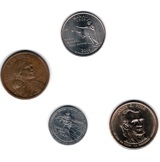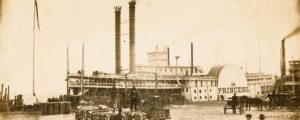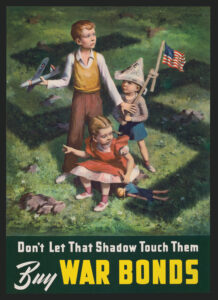Brother, can you spare a dime? That phrase, immortalized in popular song and literature, probably isn’t uttered by many panhandlers these days. And “a penny for your thoughts” would probably insult anyone the classic conversation icebreaker is directed to now. The American coin has taken a beating for decades and not just from inflation. It’s also lost its luster in the age of electronic money.
 Coins are heavy, dirty and inconvenient to use in today’s card economy. Banks won’t even accept rolled coins unless the bearer attaches the equivalent of an IRS Form 1090 to the paper wrapper. Add pay phones—which are on the endangered species list themselves—parking meters and even pay toilets to the list of automatic devices moving away from coin payment. The U. S. Post Office is in the process of removing all coin-fed stamp machines from its buildings. Even those longtime stanchions of coin-based business, laundromats and car washes, are finding alternatives to coin payment in order to discourage fraud and to streamline operations. Of course, casinos in Las Vegas and elsewhere converted nearly all their one-armed bandits to bill and ticket operation long ago.
Coins are heavy, dirty and inconvenient to use in today’s card economy. Banks won’t even accept rolled coins unless the bearer attaches the equivalent of an IRS Form 1090 to the paper wrapper. Add pay phones—which are on the endangered species list themselves—parking meters and even pay toilets to the list of automatic devices moving away from coin payment. The U. S. Post Office is in the process of removing all coin-fed stamp machines from its buildings. Even those longtime stanchions of coin-based business, laundromats and car washes, are finding alternatives to coin payment in order to discourage fraud and to streamline operations. Of course, casinos in Las Vegas and elsewhere converted nearly all their one-armed bandits to bill and ticket operation long ago.
To make matters worse, in the early 1990s the U. S. Mint, the government coinage operation, introduced the Susan B. Anthony one-dollar coin. Lacking the metallurgy or value of the old American silver dollar, it also lacked the size—and was easily confused with the quarter that closely resembled it in dimensions, color and weight. The mint quickly corrected this error with the Susan B. Anthony gold dollar which, though a shiny color, contains about as much gold as a piece of costume jewelry. It did remedy the problem of customers having to explain to cashiers that they weren’t paying a $ 3.95 lunch bill with four quarters. One would think this situation would have made some mint employees quite depressed and had political pundits postulating whether the United States had a constitutional responsibility to mint coins at all.
Then someone hit on a truly great idea.
State Quarters Program
A little over a decade ago, the mint introduced the United States Mint 50 State Quarters Program. Each new quarter would feature the traditional George Washington bust on the face of the coin; however, a new twist would be added: the name and symbolic images of one of the fifty states would appear on the reverse. The ten-year program coincided with a new metallurgical composition for the quarter but was advertised to educate the population about the history and culture of the fifty states. Rather than traditional symbolism, the mint received a unique design from each state, which was created by public input and overseen by each state’s governor and appointed committees. Hence, the coins carry such diverse images as the one-room schoolhouse (Iowa), the Space Shuttle (Florida) and the scissortail-flycatcher bird (Oklahoma). The coins entered circulation in 1999. The first 13 were released in the order that the original states ratified the U. S. Constitution. The remaining quarters came out in the order of their date of admission to the Union, followed by Washington, D. C., and protectorates such as Guam and Puerto Rico. Five coins were introduced each year through the end of 2008.
The program was an immediate hit and overwhelmed expectations. Consumers quickly scooped up and saved the coins, with a variety of albums and other commemorative display devices offered for sale. A new type of numismatist (coin collector) was born, and the unique coins introduced thousands to the traditional hobby for the first time. Demand was such that quarter production at the mint rose 135% from annual production in the decade before. And, amazing as it seems, the government actually made a profit on the program—more than 3.5 billion in seigniorage (the difference between face and material value) and numismatic product sales. The unprecedented success of these quarters has prompted the mint to produce new nickel, quarter and dollar designs—Native American and presidential dollars, American scenic nickels and the latest launch—quarters featuring national parks.
Coins are back on the minds of the American public. One casino outside Las Vegas is now advertising the return of coin slot machines. (There’s nothing as sweet as the racket made by dozens of silver dollars dropping into a metal tray.) American coin design, which had languished for many years, was jolted into hyperactivity by a bit of thinking outside the box. Maybe more federal departments will begin to do the same. For more information on new U. S. coin designs and coin collecting go to the U. S. Mint Website.




